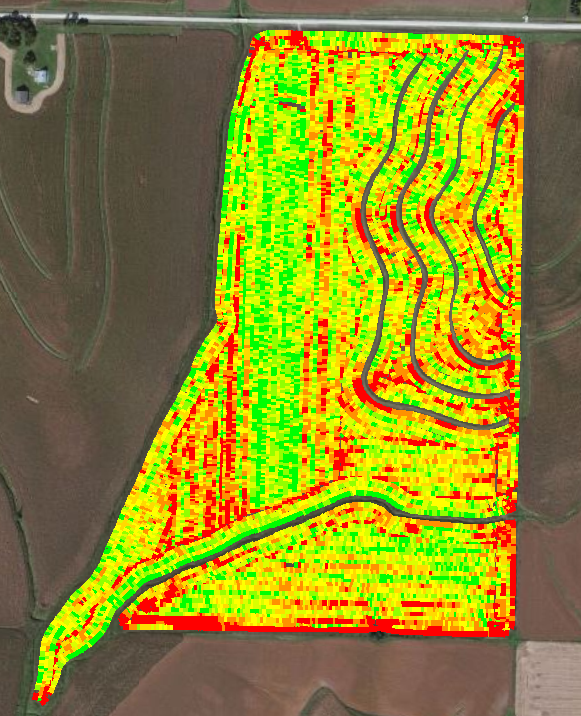 With planting season now upon us, it is the time of year to be thinking about the data that you are collecting as you go across the field, as it becomes increasingly important each year to make management decisions from. I was asked a while back what I thought was the most important data to collect from the field, which is not a short answer, but I’ll give it a run.
With planting season now upon us, it is the time of year to be thinking about the data that you are collecting as you go across the field, as it becomes increasingly important each year to make management decisions from. I was asked a while back what I thought was the most important data to collect from the field, which is not a short answer, but I’ll give it a run.
Each and every pass across the field has value, even tillage passes. It becomes especially important data if you only treat part of a field or only some fields a certain way. For example, if you run a field cultivator or vertical tillage machine on part of a field or only on some of your acres, capturing that data may be more valuable than data from your sprayer (for comparison sake) if you treat every acre with the same chemical program. You may be able to hone in on a yield advantage from what you did in the field, or maybe even from what you didn’t do…
There is obvious value in the planting and harvest data from the field, which brings me to the point of the article. One of the biggest frustrations customers have is NOT having the data that they believe they logged, or should have saved somewhere. Here are some things to do or try that can eliminate the year end frustrations of not having what you hoped to collect throughout the year.
1. Run Your Data Through a Cloud Site
Many of the precision ag vendors out there today offer some sort of wireless file transfer service for a fee. I know that the fee can be a deterrent, but believe me, it is worth it! For example, Ag Leader charges $295 per year for file transfer, plus you will need your own source of wifi. Even if you spend twice this amount it works out to pennies per acre to make sure that the highly valuable data you are collecting doesn’t get misplaced or deleted. This is by far a sound investment, that usually includes some other benefits along with it.
2. Copy Your Data from the Display EVERY Day
I know this seams like extra work, and come on, you just put in a very long day already. My response to this is how much data can you afford to lose? When the data is copied out daily, AND you get it to a safe location (cloud or backed up drive, NOT a USB in your desk drawer) then you know that it will be there when you want to use it.
3. Read in the Data after the First Day of Running
Just like you will go dig behind the planter to make sure it is doing what you want it to do, it is always a good idea to read in a file to your mapping software (or send to your service provider to do for you) so you can make sure that everything is logging correctly and you are collecting good data. This one simple step will save you a lot of headaches later in the year.
4. Do Something with the Data IMMEDIATELY after Completing Field Work
I know, once again, you are worn out from the long hours and just need to catch your breath before you dive into the data. The problem here is that timely action could possibly be your saving grace. Speaking again about Ag Leader displays, they save in their internal memory all of the data logged for a period of time after the files are copied out, so if you do something within a few days of copying the data from the display, chances are you could go recover missing data from the display if you don’t have it elsewhere. Another benefit of timely action upon completion of field work is you could be first in line with your service provider if you aren’t processing the data yourself. That means that you will get your maps back faster, and likely have a nice report to go certify your acres with at the FSA office.
Nothing is more heart wrenching for me than to explain to a customer why they won’t have their data for the year, and following the above steps will provide several safety nets to catch you in the case that something doesn’t go well. I realize that all of these are best case scenarios, but follow as many as you can for your operation and you will reduce the chances of missing valuable information that you can make future management decisions from in your operation.
There is no data as good as your own data, so take a few extra minutes to try and protect it!



![[Technology Corner] A Big Step Forward for Interoperability & Data Sharing](https://www.precisionfarmingdealer.com/ext/resources/2025/12/12/A-Big-Step-Forward-for-Interoperability--Data-Sharing.webp?height=290&t=1765565632&width=400)


